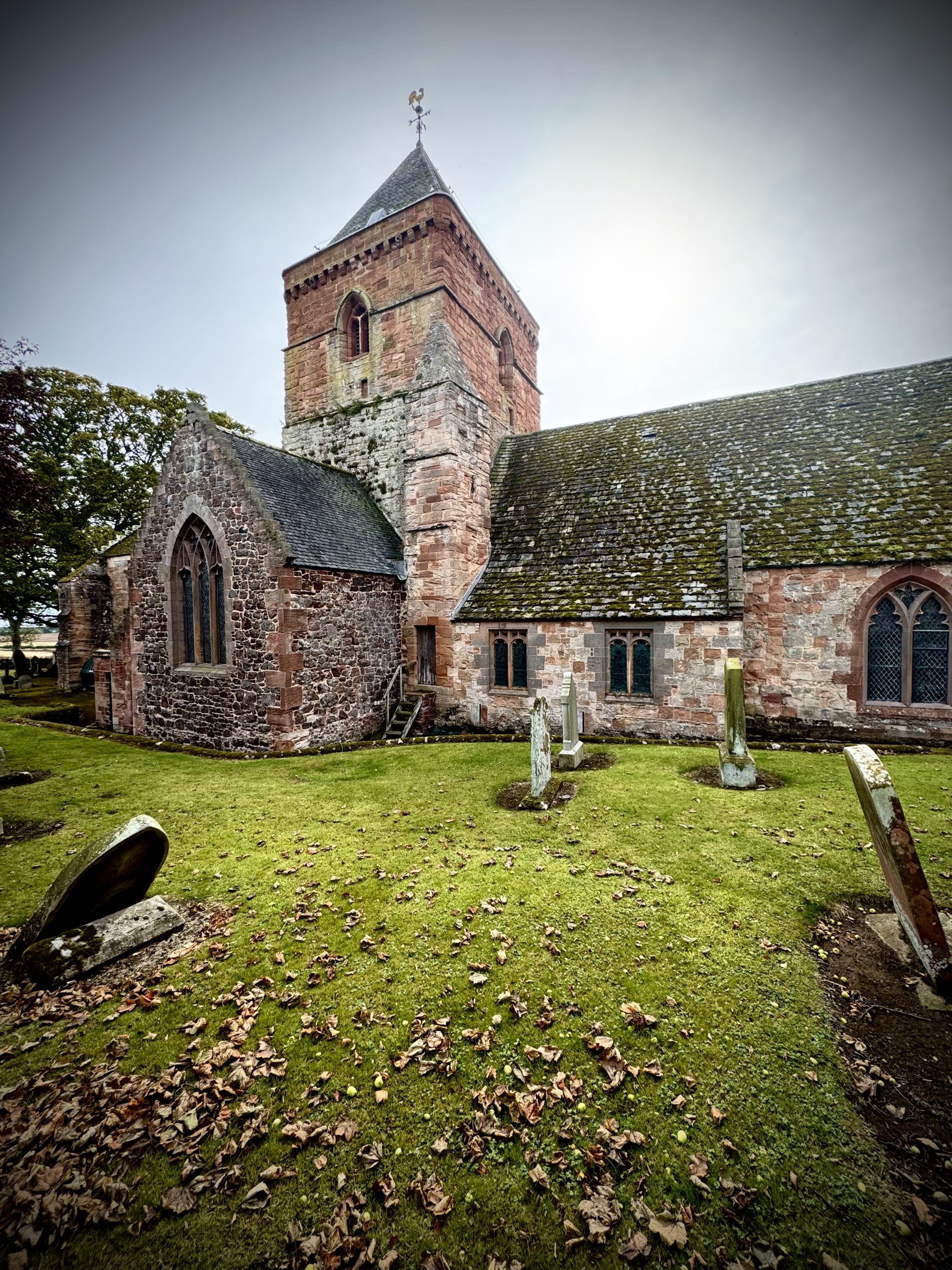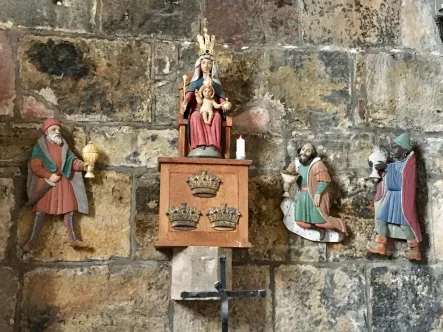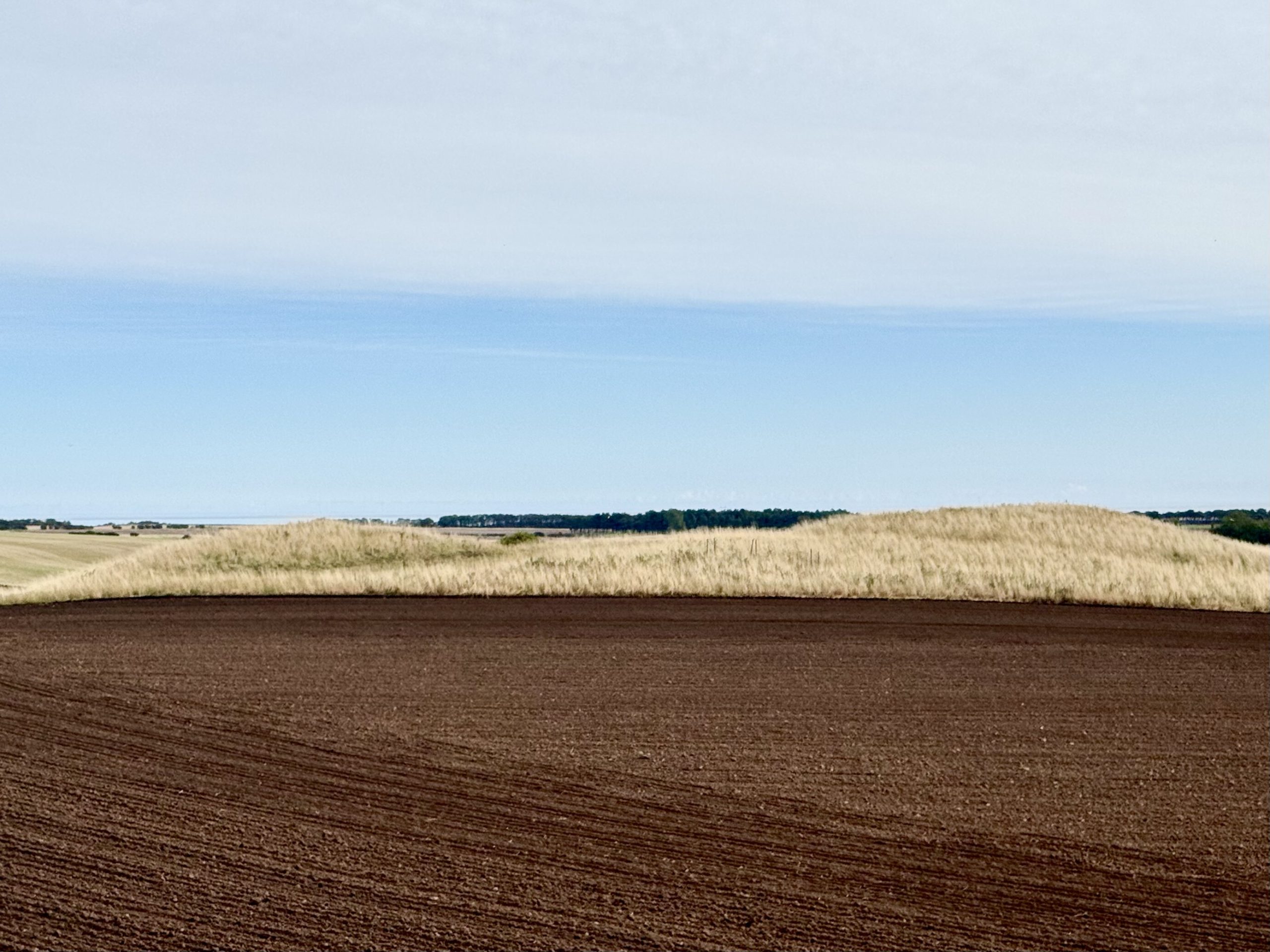The Divine Feminine in Pre-Reformation Scotland: Whitekirk, East Lothian.

Share this post:
Share on facebook
Share on twitter
Share on linkedin

About 13km from where I live in Dunbar, and 6.4km from North Berwick lies the village of Whitekirk. It’s a little village with a big church- a well-preserved medieval church known as St Mary’s. A place of worship since the earliest times, Whitekirk was known as Hwīt Cirice in Old English, as it had an ancient well (the well has long since dried up).
Whitekirk was also known far and wide for a famous miracle working statue known as “Our Lady of Haddington”. Whitekirk was a significant site of worship on the pilgrimage route from St Andrew’s to Santiago de Compostela.
The statue, Our Lady of Haddington, originally at Whitekirk, was later moved to St Mary’s church in Haddington (10 miles away) after a pilgrimage route was also established in that area. The original shrine was desecrated by English armies in 1365 and was reconstructed in Haddington later that same century. The shrine was then lost after the Reformation in the 16th century.
In 1972, the shrine was restored; The Earl of Lauderdale commissioned a wood carver from Oberammergau to create new figures of Our Lady and the Three Kings.


Pre Reformation Scotland~
Earlier this year I was exploring pre-Reformation sites connected with the divine feminine in Fife- the cave in Pittenweem that was once a dedicated shrine to Mary Magdalene opened the door for further research.
In Haddington, a Cistercian Nunnery of St. Mary was founded around 1178, and St. Mary’s Collegiate Church was built in the 14th century.
In pre–Reformation Scotland, Haddington was one of several ancient convents, the others being:
Dunfermline Abbey, Dundee, Melrose Abbey, Sweetheart Abbey, Iona Abbey, the Priory of St Andrews, Culross Abbey, Glenluce Abbey, Crossraguel Abbey, and the Nunnery at Iona (Augustinian).
I pass Whitekirk church three or four times a week and have done for years. Opposite the church is a small double bumped mound that has always piqued my interest. Yesterday, dowsing rods in hand, I went to the mounds to tune-in. I’ve always had a sense that it is a power point, and that is exactly how I experienced it.

It seemed to me that Whitekirk is on an energy line south to Traprain Law, and further down to the Scottish Borders (possibly Castle Douglas, and Kelso) and beyond . To the north, Tantallon Castle and Auldhame, and then maybe St Andrews, and the east Neuk of Fife, toward Brechin… but all of this is the speculative ponderings of a Dowser in training.
What does feel alive for me though is that in pre-Reformation Scotland, the feminine divine held an important role in religious life, and I have long sensed that these ancient Convents and Nunneries rise from a grid of feminine energy in the Earth, that is particularly associated with water lines and wells.
Join the mailing list for news, updates and promotions.
- Copyright © 2025 Gnostic Woman


